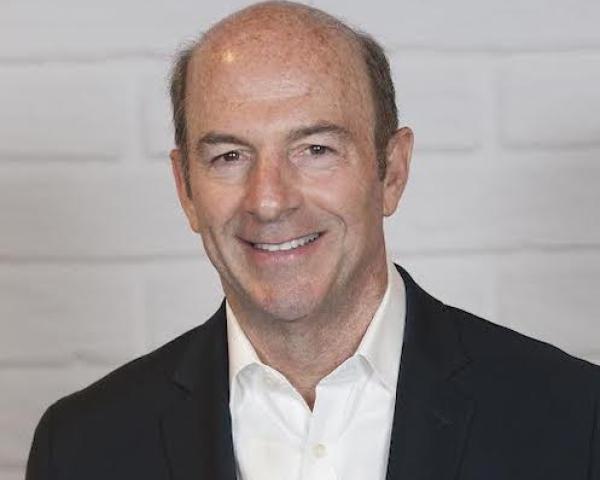After a global pandemic and a war in Europe that no one saw coming, maybe we should get out of the business of making predictions. But there’s still value in trying to pinpoint big trends. After all, it’s not about being spot on. It’s about helping industry players orient themselves, compete more effectively and better serve customers in an increasingly volatile global market. So, here are our seven key trends to look out for in the insurance industry in the year ahead:
1. Insurance products will be reimagined in the cloud
In 2023, pressure on renewals, premiums, cycle times and customer retention will pose a significant challenge to carriers. Those that use cloud infrastructure to do more than just sign up customers and settle claims will succeed. While many have already made the move to cloud and invested heavily in digital transformation, insurance still lags behind other industries in terms of the imaginative use of advanced digital technologies to deliver the new products that customers want and the market needs.
That will begin to change this year. Some carriers will use cloud to make the typically opaque claims process more transparent and easier to understand for their customers. Others will use application programming interfaces and straight-through processing to reduce cycle times by improving the flow of data between parties. And innovative cloud-based products will push through based on demand. For example, in auto insurance, there will be greater refinement and sharpening of payment options such as per-mile or per-journey, supported by better use of telematics. The most imaginative insurers of 2023 will turn claims processes into shopping experiences to enhance customer experience and reduce cycle times.
2. The graying of the industry will prompt digital transformation
Grow old or grow up? That’s the choice facing insurers in 2023. Talent in the industry has long been on the older side. As baby boomers retire, carriers are finding that up to a quarter of positions are unfilled in some functions. So, carriers will be looking to bring in third parties at scale. They’ll do this not to replace bodies and outsource day-to-day processes but to help codify institutional knowledge and build rules-based digital systems that deliver a more reliable and sustainable operational model over the long term.
3. Analytics will offer quick ROI
Now that the basic operational transition to the cloud is complete for many insurers, competitive differentiation will come from accelerating its benefits; namely, speeding the process of insuring and improving customer and broker experience. Data will further increase in strategic importance in 2023. But don’t expect to see lots of multi-year, long-term investments in enterprise resource planning or customer relationship software. Rather, expect to see quick investments in digital and analytics solutions to achieve rapid returns on investment – such as predictive analytics that help insurers anticipate and triage customer need and application program interfaces for no-key, no-touch data ingestion. The coming year will see fewer deep transformation initiatives and more light-touch applications of digital and analytics for specific, immediately attainable goals.
4. Embedded insurance will bring new opportunities
Value, not price, will be a key area of focus for both carriers and brokers. Instead of ratcheting premiums up, insurers will pair prudent underwriting with innovative product design that leverages more personalized data. They’ll deliver these products through partners and digitally enabled distribution channels.
Embedded insurance — which allows any third-party, non-insurance brand to seamlessly integrate insurance products into its customer’s purchase journey — will create opportunities for carriers and insurtechs alike. In property and casualty and general insurance alone, the embedded insurance market is forecast to grow to $722 billion in gross written premiums by 2030, more than six times its current size and 25% of the total market size.
“Embedded insurance has opened access to new addressable market segments,” says Davide Palanza, research manager, IDC Financial Insights, “The size of this opportunity means the business model is giving birth to a new, vibrant ecosystem of insurance providers, embedded insurance enablers, and distribution partners. It will allow the industry to reframe its digital purpose individually and collectively, bringing benefits not only to insurers but also other organizations and customers with more relevant and affordable insurance.”
For example, this year will see auto insurance bundled at the point of vehicle sale and offered by original equipment manufacturers (OEMs) under the car brand -- with the risk underwritten by traditional carriers. Because of broader price pressures on OEMs (such as the microchip shortage), carriers will have to do more with less when delivering the services they provide as part of the underlying policy. One example? Claims Manager - a configurable servicing platform that uses computer vision and artificial intelligence to assess damage to vehicles during the claims process.
See also: Cybersecurity Trends in 2023
5. Insurers and insurtechs will be friends, not foes
Insurance players will spend 2023 treading a path already well-worn by their banking counterparts. Over the last few years, fintechs have been playing nicely in the sandbox with banks as their partners rather than their competitors. A symbiosis of skillsets has been the key to their mutual success. This year, insurers and insurtechs will make the same move.
Insurers will no longer bear the sunk cost of massive investments in technologies that can quickly become outdated. Instead, they will partner with insurtechs that offer focused and targeted solutions, which solve a specific piece of the puzzle within the insurance value chain. Already, insurtechs are becoming a huge investment opportunity for insurers. For example, in October 2022, insurance holding company Tokio Marine announced that it would invest $50 million in the series B funding of bolttech, a Singapore-based insurtech that seamlessly connects insurance providers, distributors and customers in the world’s largest technology-enabled insurance exchange. We expect to see more such tie-ups in the future.
According to Ryan Mascarenhas, group chief customer and operations officer at bolttech, “Creating tangible, lasting value for a customer often requires an insurer to form multiple partnerships with best-of-breed industry experts and embrace co-opetition. Traditionally, insurance carriers have wanted to manage the entire value chain themselves. So, embracing an ecosystem approach requires a big mindset shift. But it opens up so many additional possibilities, especially where the goal is to make the end customer experience as seamless as possible.”
As the market slowly moves away from traditional channels, insurers will continually evaluate which insurtechs are the best fit for them and look for the right third parties to help orchestrate those solutions.
6. Macroeconomic conditions will be a mixed bag for industry players
High inflation and high interest rates are hammering consumers and have tipped many global economies into the early stages of recession. But should insurers fear the dip? Overall, not necessarily.
Certainly, carriers will feel pressure on profit in some areas. For example, because of continued supply chain disruption, competition for (and the price of) parts and materials remain high. For property and auto insurers, this is increasing servicing costs and cycle times. If these carriers decide to hold down premiums to encourage financially stretched customers to renew their policies, they may end up taking greater losses on those products.
But those increased losses will be offset by high interest rates. Carriers make most, if not all, of their profit from investments -- especially in the bond market. So, high interest rates mean higher rates of return, which may cushion any drop-off in demand for policies and the increased cost of servicing them.
Shawn Homand, head of product at Liberty Mutual, sums up the tradeoff neatly: “With respect to property, we don’t expect any market softening in 2023 -- we expect continued hardening. There are capital constraints — caused by catastrophe losses, the current interest rate environment and inflation — which impact the supply side. But even with a reduction in the demand side due to a global recession, this will not tip the scale down in any meaningful way.”
Homand also expects that “increased focus on analytical tools that provide better risk selection and accurate valuation analysis” will help keep internal costs down and premiums stable, too.
Not everyone in the industry will benefit, though. Now that the initial pandemic terror has abated, life and annuity insurers may see a dip in simple life insurance policies. Insurance brokers, too, will have a tougher time convincing cash-strapped customers to renew discretionary policies. And those smaller carriers looking for a merger or growth acquisition may find themselves waiting for the cost of capital to fall before they act. Conversely, carriers with deeper pockets could decide that now’s the time to gobble up small fry. And, as always with a recession, expect policy fraud to increase.
7. Insurers will need to get specific about ESG
How to respond to the climate crisis has become a defining challenge for the insurance industry. Without insurance, most new fossil fuel projects cannot move forward, and existing ones must close. So, while not immediately urgent from a bottom-line perspective, forward-looking insurers will also spend time on climate change and other environmental, social and governance (ESG) priorities in 2023.
Carriers continue to field questions from their boards and Wall Street on their commitment to a sustainable future. And industry analysts expect big changes by around 2027/8. According to Insure Our Future, an international campaign calling on insurance companies to exit fossil fuels in line with a pathway limiting global warming to 1.5°C, 13 insurers have committed to end or restrict underwriting for new oil or gas projects, 41 have done the same for coal and 22 for tar sands, as of October 2022.
While this cleaner future may seem far away, in the short term, carriers need to seek more clarity and definition in their ESG strategies for products and markets. The complexity of the industry dictates that a long on-ramp is required to make the necessary changes. Insurers can expect investors to be asking questions and demanding more specific answers.
Ultimately, 2023 will see a more competitive insurance market. While continued economic disruption makes prices and policy servicing tricky, high interest rates and the industry’s prior investment in cloud bodes well for those willing to be inventive and make quick investments in areas where better data can make a big difference. Bring it on.


































